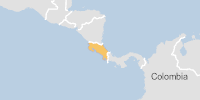RSS feed source: US Energy Information Administration
In-brief analysis
October 20, 2025
U.S. natural gas pipeline exports to Mexico averaged 7.5 billion cubic feet per day (Bcf/d) in May 2025, the most of any month on record as Mexico’s demand for natural gas, particularly in the electric power sector, increases. On an annual basis, U.S. natural gas pipeline exports to Mexico averaged 6.4 Bcf/d in 2024, a 25% increase compared with 2019 and the highest on record in data going back as early as 1975.
Total consumption of natural gas in Mexico increased from 7.7 Bcf/d to 8.6 Bcf/d during the same time period, with most growth concentrated in Mexico’s electric power sector.
Natural gas exports from the United States enter Mexico along four main corridors—South Texas, West Texas, Arizona, and California—with a combined capacity of about 14.8 Bcf/d and an approximate utilization
Click this link to continue reading the article on the source website.



